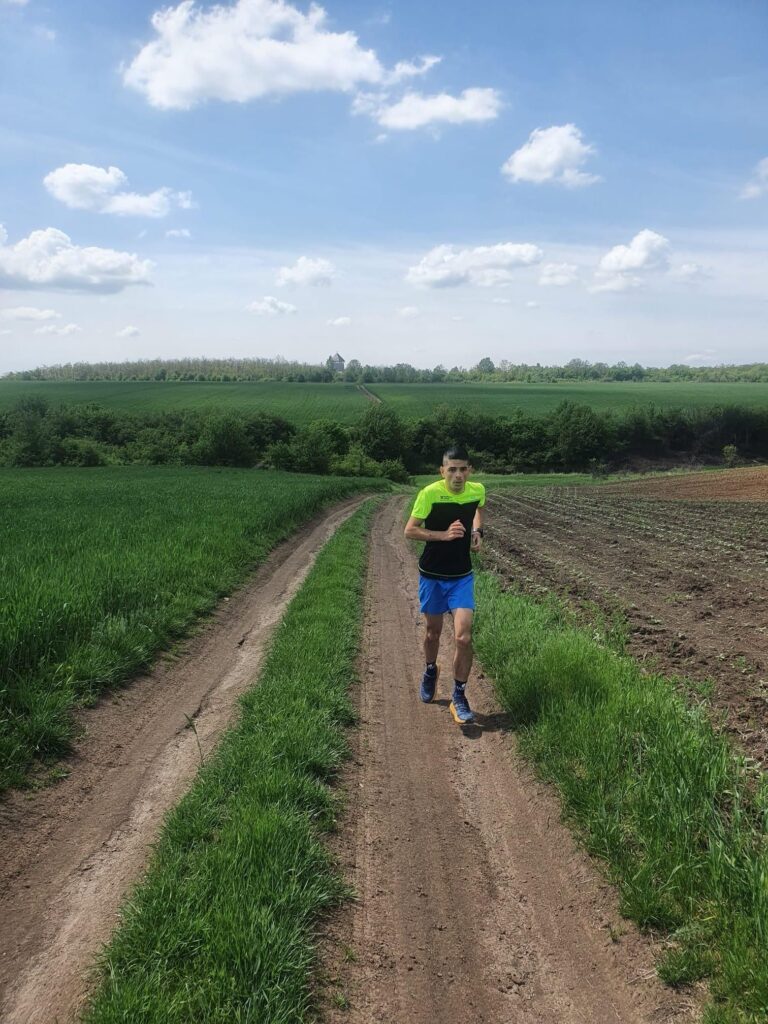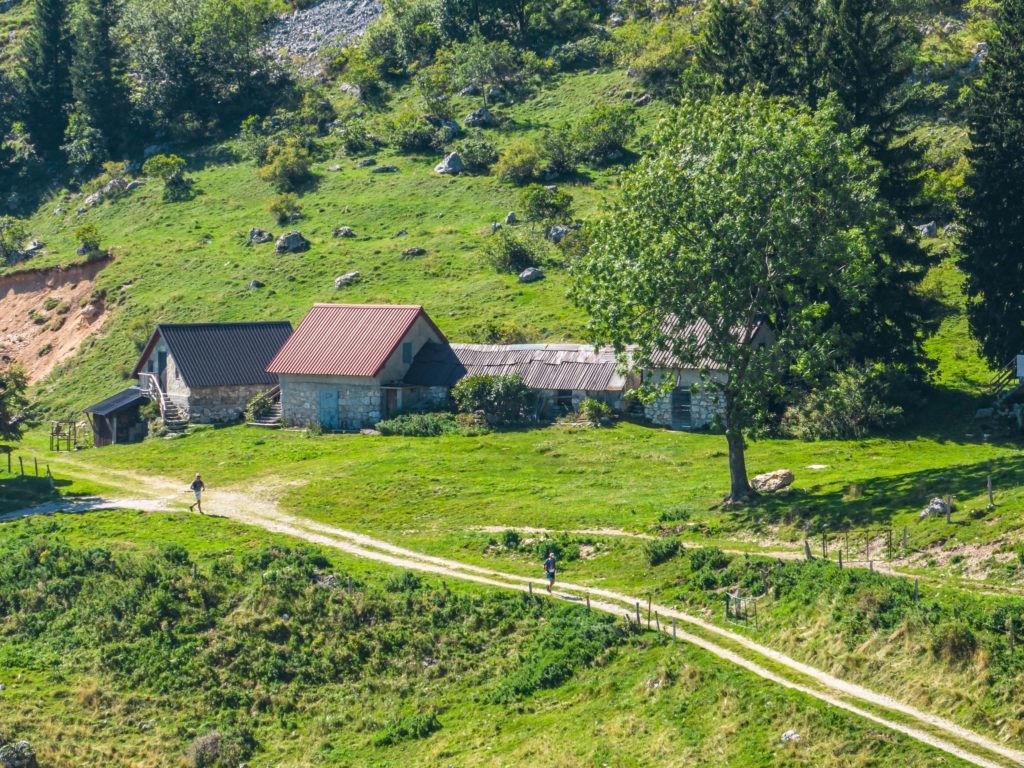Most sidewalks and popular loops in local parks are paved with concrete, which can make every stride repetitive and monotonous. However, you can easily break this routine by exploring hidden trails in local parks or venturing into nearby forests. Many parks still offer unpaved paths, which not only provide a refreshing change but also help you avoid crowded areas, especially during spring and summer.

Trail running presents different challenges throughout the year, from navigating fresh snow in winter to splashing through muddy trails after a rain. These experiences can add variety to your training and introduce new routes right in your neighborhood. With the right gear and preparation, trail running becomes an enjoyable and strength-enhancing activity. Below are the main benefits of trail running, along with practical reasons to incorporate it into your routine:
1. Softer Surfaces Reduce Impact
Running regularly puts stress and pressure on your joints and legs, especially when training on hard surfaces like concrete or asphalt. Trail surfaces are typically softer, reducing the impact on your body and allowing you to run longer distances more comfortably. Additionally, running on trails can speed up post-run recovery and significantly reduce the risk of injury by minimizing repetitive stress.
Research published in the Journal of Sports Sciences has shown that running on softer or uneven surfaces leads to lower ground reaction forces compared to concrete or track running. That means every stride is easier on your knees, hips, and ankles. For older runners or anyone recovering from injury, switching to trails can extend the longevity of their running journey.
2. Build Leg Strength and Stability
Trails provide uneven surfaces, making each step slightly different. This variation activates a wider range of muscles and joints that may not be fully engaged during road running, ultimately strengthening them. Stronger muscles and joints contribute to longer strides, improved balance, and even faster times on the road.
Trail running also engages stabilizing muscles in your core, hips, and ankles, which are essential for maintaining balance and power on uneven terrain. Think of roots, rocks, or steep descents: every obstacle forces your body to adapt and get stronger. Many elite marathoners and triathletes include trail running sessions specifically to build this functional strength without heavy gym work.
3. Practice Hydration and Nutrition Planning
Running on sidewalks or urban parks allows quick access to stores or facilities if you need water or food. Trail running, especially in remote areas like forests or mountains, requires careful planning for hydration and nutrition. This provides an excellent opportunity to test different gels, sports drinks, and fueling strategies that could also benefit you during road races and marathons.
For example, carrying a hydration vest or handheld water bottle becomes second nature on the trails. Learning when to sip, how much to carry, and which foods your stomach tolerates best under effort can make the difference between a strong race and hitting the dreaded “wall.” Trail running is like a natural lab for fine-tuning your fueling strategies.
4. Boost Motivation and Endurance
Exploring new trail routes adds excitement and discovery to your runs. Activities like creating GPS routes, chasing Strava segments, or finding hidden paths can make running a rewarding adventure. You might even discover scenic viewpoints, historical sites, or challenging hills that turn into your favorite training spots.
Trail running is also an excellent way to build a strong aerobic base and enhance endurance. Because trails often include climbs, descents, and technical footing, your heart rate varies more than it would on a flat road run. This variability improves cardiovascular fitness, making you stronger for both trail races and road events like the marathon.
5. Mental Health Benefits of Trail Running
One of the most underrated benefits of trail running is its positive effect on mental health. Spending time in natural environments has been shown to lower stress levels, reduce anxiety, and improve overall mood. The Japanese practice of “forest bathing” (shinrin-yoku) is built on the same principle: time in green spaces helps the body and mind reset.
Trail running encourages mindfulness because you must stay present to navigate roots, rocks, and changes in terrain. Many runners report finishing a trail run feeling mentally refreshed, as if they’ve taken a short vacation from daily worries. This mental reset can be just as important as the physical workout itself.
6. Seasonal Challenges and Rewards
Unlike road running, which looks and feels similar year-round, trail running transforms with the seasons. Each brings unique challenges and rewards that keep your training fresh:
- Spring: muddy trails that build strength and agility.
- Summer: shaded forest paths that offer relief from the heat.
- Autumn: crisp air and colorful leaves that make every run scenic.
- Winter: snow-covered routes that train balance and resilience.
This seasonal variety prevents burnout and keeps running exciting. Even familiar trails look completely different with each season, adding a sense of discovery to your routine.
Trail Running vs Road Running
Many runners wonder whether trail running is better than road running. In reality, both have unique benefits:
- Trail running: softer surfaces, improved strength, lower injury risk, and a more adventurous experience.
- Road running: consistent pacing, better suited for speed workouts, and direct preparation for road races.
Combining both types of running in your training plan delivers the best results: the strength and resilience of trails with the speed and precision of roads.
Trail Running Tips for Beginners
- Invest in trail running shoes with good grip for slippery or rocky surfaces.
- Start with familiar local trails before venturing into remote routes.
- Bring water, gels, or snacks if you plan to run more than an hour.
- Watch your footing and shorten your stride to maintain balance.
- Adjust your pace—don’t expect road speed on technical terrain.
- Tell someone your route or carry a phone when running in remote areas.
Final thoughts: Trail running offers a refreshing change from repetitive road loops while also building strength, improving endurance, and supporting mental health. Whether you are training for your next marathon or simply want to rediscover the joy of running, adding trails into your routine can transform your experience. Lace up your shoes, head out to the trails, and enjoy the many benefits waiting off the beaten path.
Frequently Asked Questions About Trail Running
Is trail running better than road running for beginners?
Trail running can be an excellent option for beginners, especially those who want to reduce impact on their joints. Softer surfaces make each stride easier on the body, and the varied terrain builds strength and balance. However, trails can also be more challenging to navigate due to rocks, roots, or steep climbs. A balanced approach works best: start with short trail runs mixed with road runs. This allows new runners to build fitness while gradually learning how to handle uneven ground. Over time, many beginners find trails more enjoyable and less monotonous than running on concrete.
Does trail running burn more calories than road running?
Yes, trail running often burns more calories than road running because of the extra effort required to manage hills, uneven surfaces, and variable terrain. Research shows that running on soft or hilly trails can increase energy expenditure by 10–20% compared to flat, paved routes. Factors like elevation gain, mud, or snow also increase the difficulty. However, calorie burn depends on pace, distance, and personal fitness level. While you may run slower on trails, the extra muscle activation and higher heart rate often result in a more demanding workout and improved endurance over time.
What muscles does trail running work?
Trail running works a broader range of muscles than road running. In addition to the primary leg muscles—quads, hamstrings, glutes, and calves—you engage stabilizing muscles in your core, hips, and ankles. The uneven terrain forces your body to adapt with each step, strengthening smaller muscle groups that support balance and coordination. Steep climbs target glutes and calves, while downhill running builds eccentric strength in quads. Over time, this variety creates a stronger, more resilient body that is less prone to overuse injuries. Many runners notice improved overall strength after adding trails into their weekly routine.
Can trail running improve road race performance?
Yes, trail running can directly improve road race performance. The strength and stability gained from uneven terrain translate into better running economy and reduced injury risk on the roads. Trails also build cardiovascular endurance since hills and variable footing naturally raise heart rate. Many elite marathoners include trail runs in their training cycles for these reasons. While you may run slower on trails, the benefits transfer when you return to flat, predictable surfaces. Incorporating one or two trail sessions per week can make road training more sustainable and help runners achieve faster race times.
Do I need special shoes for trail running?
Trail running shoes are not mandatory for short, easy runs on smooth dirt paths, but they are highly recommended for technical trails, mud, or rocky terrain. Unlike road shoes, trail shoes have deeper lugs for traction, sturdier materials to protect against rocks and roots, and designs that offer better stability. They also tend to be more durable in harsh conditions. If you plan to run trails regularly, investing in a good pair of trail shoes will improve comfort, performance, and safety. Beginners can start with hybrid shoes that work well on both roads and light trails.



